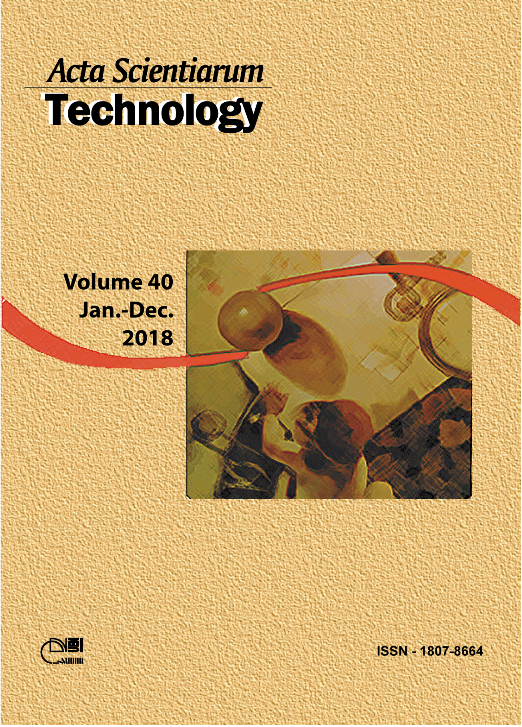<b>Investigation of NIR spectra pre-processing methods combined with multivariate regression for determination of moisture in powdered industrial egg
DOI:
https://doi.org/10.4025/actascitechnol.v40i1.30133Palavras-chave:
chemometrics, near-infrared spectroscopy (NIRS), thermobalance, oven reference method, calibration model, PLS.Resumo
Â
High productivity and meantime perishability of in natura eggs, make powdered egg attractive for patisseries and pasta industries. Water reduction in 65%, extends shelf life from 1 to 12 months, preventing also Salmonella. Maximum powdered egg moisture allowed by Brazilian law is 6.0%  (w w-1). However, its determination by reference technique (oven at 105ºC for 8 hour) is lengthy for processing industry. Therefore, the purpose of this study was to investigate the influence of several spectral pre-processing techniques in the application of near-infrared spectroscopy associated with chemometrics models for determination of moisture content in powdered egg, without the need of sample preparation and destruction, held at 0.5 min. Several pre-treatment techniques were evaluated to ensure spectral data reliability such as: standard normal variation; multiplicative scatter correction; smoothing and detrend. The principal component regression (PCR) and partial least squares (PLS) were evaluated with and without pre-treatment. The best results were observed in NIR/PLS model (49 samples), providing an adequate correlation (r) of 0.96, for cross-validation. Using 21 samples as prediction set, NIR/PLS showed relative error (RE) < 2.0%, compared to primary methods oven and thermobalance, indicating to be suitable for industrial quality control.
Downloads
Downloads
Publicado
Como Citar
Edição
Seção
Licença
DECLARAÇíO DE ORIGINALIDADE E DIREITOS AUTORAIS
Declaro que o presente artigo é original, não tendo sido submetido í publicação em qualquer outro periódico nacional ou internacional, quer seja em parte ou em sua totalidade.
Os direitos autorais pertencem exclusivamente aos autores. Os direitos de licenciamento utilizados pelo periódico é a licença Creative Commons Attribution 4.0 (CC BY 4.0): são permitidos o compartilhamento (cópia e distribuição do material em qualqer meio ou formato) e adaptação (remix, transformação e criação de material a partir do conteúdo assim licenciado para quaisquer fins, inclusive comerciais.
Recomenda-se a leitura desse link para maiores informações sobre o tema: fornecimento de créditos e referências de forma correta, entre outros detalhes cruciais para uso adequado do material licenciado.















